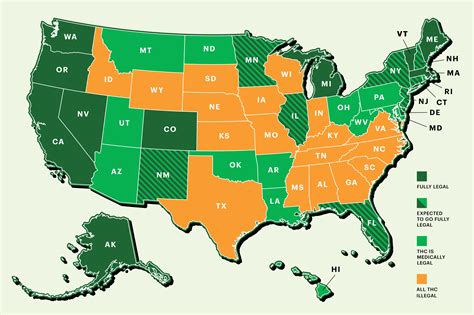The complex and evolving landscape of marijuana legalization in the United States presents a significant policy gap between federal law and state-level initiatives. As of March 1, 2023, 21 states, along with Washington D.C., Guam, and the Northern Mariana Islands, have enacted laws permitting the recreational use of marijuana. These state initiatives are removing state-imposed penalties for specific activities involving marijuana, signifying a major shift in public policy and attitude towards cannabis.
Despite this growing trend of legalization at the state level, marijuana remains illegal under federal law. Over 50% of states, including the District of Columbia, Guam, Puerto Rico, and the U.S. Virgin Islands, have legalized marijuana for medical use. Furthermore, an increasing number of states are legalizing it for non-medical adult use. However, the Controlled Substances Act (CSA) still classifies parts of the Cannabis sativa plant under the drug class “Marihuana,” indicating a stark contrast between state laws and federal regulations.
The U.S. Food and Drug Administration (FDA) holds the authority to approve drugs for medicinal use in the United States. While many states have recognized marijuana’s medicinal benefits, its federal status remains unchanged, classified as a substance with no accepted medical use in treatment in the United States and a lack of accepted safety for use under medical supervision.
This discrepancy between state and federal laws is further complicated by the fact that the Department of Justice (DOJ), due to an appropriations rider enacted every year since FY2015, is prohibited from using taxpayer funds to interfere with the implementation of state marijuana laws. This has allowed the state-legal marijuana industry to operate in a somewhat protected space, despite technically violating federal law.
Public health organizations like the Centers for Disease Control and Prevention (CDC) are working to address the public health concerns of marijuana use and to improve understanding of its impact. With an estimated 48.2 million people using marijuana in the United States in 2019, the need for comprehensive public health strategies is evident. The CDC’s efforts include identifying and addressing health concerns, especially as state laws continue to evolve and more people gain legal access to cannabis.
In conclusion, the United States is witnessing an expanding policy gap between federal and state laws regarding marijuana. While states are increasingly moving towards legalization for medical and recreational use, marijuana’s status under federal law remains unchanged, creating a complex legal landscape for users, healthcare providers, and law enforcement agencies.

For more detailed information, refer to these sources:
Congressional Research Service Report,
Centers for Disease Control and Prevention,
DEA Fact Sheet.